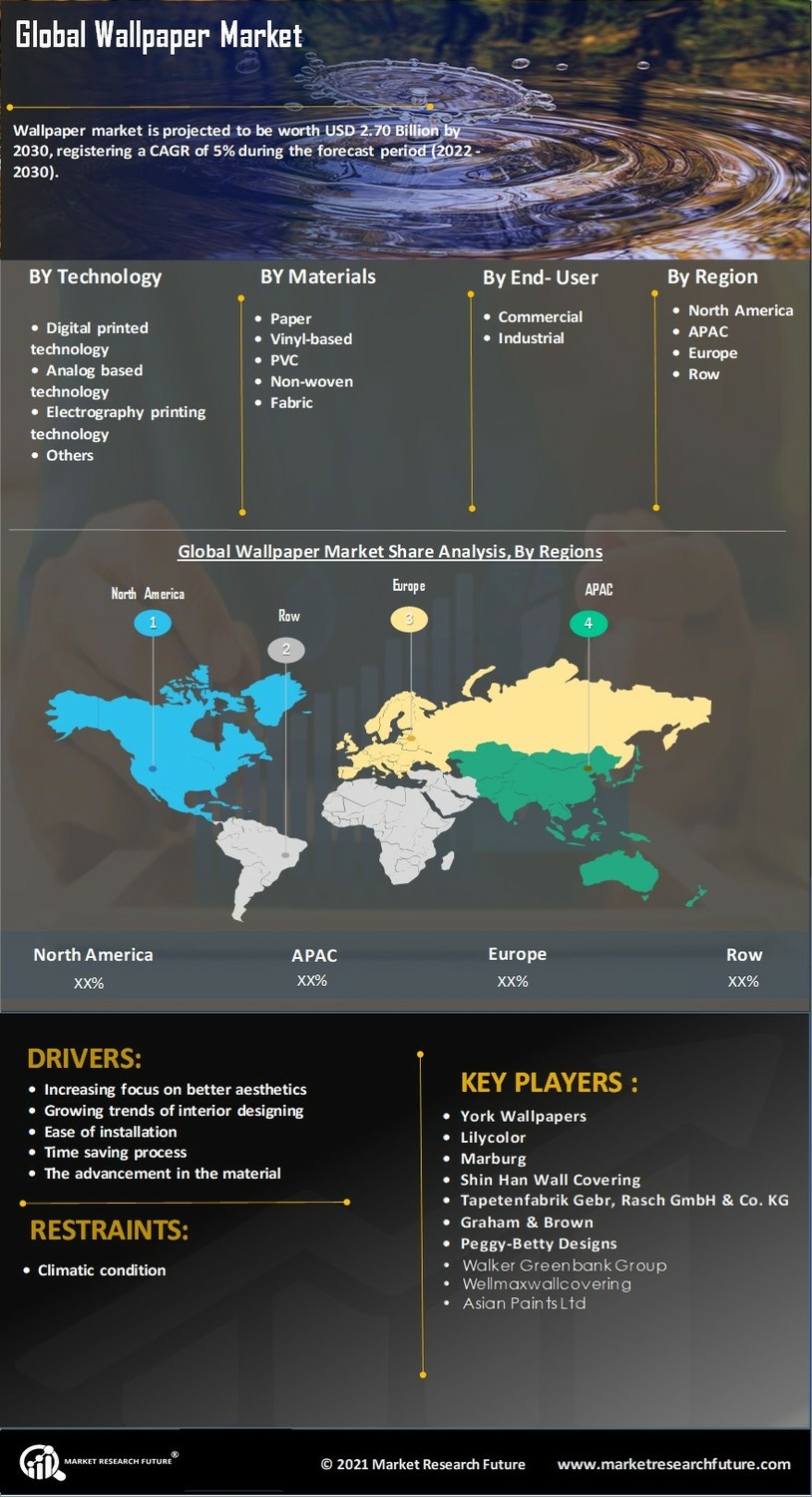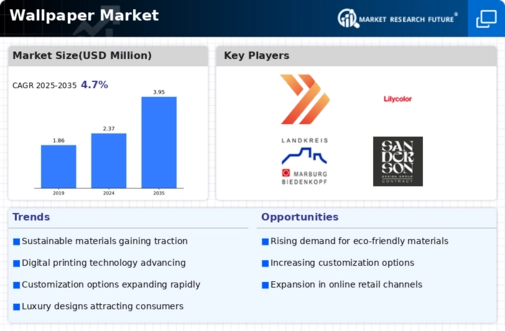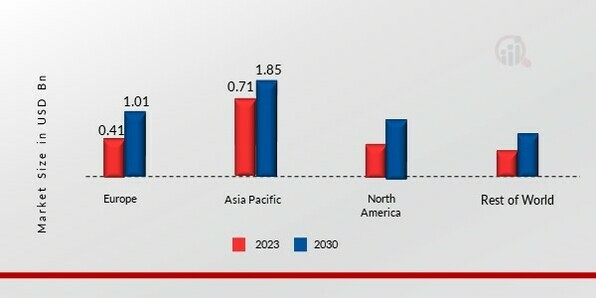Market Growth Projections
The Global Wallpaper Market Industry is projected to experience substantial growth in the coming years. With an estimated market value of 2.37 USD Billion in 2024, the industry is on track to reach approximately 3.95 USD Billion by 2035. This growth trajectory suggests a compound annual growth rate of 4.74% from 2025 to 2035, indicating a steady increase in demand for wallpaper products. Factors such as rising disposable incomes, urbanization, and a growing interest in home improvement are likely to drive this expansion. As the market evolves, it is essential to monitor these trends to understand the future landscape of the Global Wallpaper Market Industry.
Growing Real Estate Sector
The expansion of the real estate sector significantly influences the Global Wallpaper Market Industry. As urbanization accelerates and populations grow, the demand for residential and commercial properties rises. This trend is particularly evident in emerging markets, where new construction projects are on the rise. The incorporation of wallpaper in new developments enhances property value and appeal, making it a preferred choice among developers and homeowners. The anticipated growth in the real estate sector is likely to contribute to a compound annual growth rate of 4.74% from 2025 to 2035, further solidifying the wallpaper market's position within the broader construction and interior design landscape.
Diverse Applications of Wallpaper
The versatility of wallpaper applications significantly contributes to the growth of the Global Wallpaper Market Industry. Wallpapers are not limited to residential spaces; they are increasingly utilized in commercial settings, such as offices, hotels, and retail environments. This diversification allows manufacturers to cater to a broader audience, enhancing market opportunities. Additionally, the rise of temporary and removable wallpapers appeals to renters and those seeking flexibility in their interior design choices. As the demand for multifunctional and adaptable design solutions grows, the wallpaper market is poised for expansion, reflecting the evolving needs of consumers across various sectors.
Rising Demand for Aesthetic Interiors
The Global Wallpaper Market Industry experiences a notable surge in demand driven by the increasing consumer preference for aesthetically pleasing interiors. Homeowners and businesses alike are increasingly investing in interior design to enhance their environments. This trend is reflected in the projected market value of 2.37 USD Billion in 2024, indicating a robust interest in decorative solutions. The desire for unique and personalized spaces propels the adoption of wallpapers, which offer diverse designs and textures. As consumers seek to express individuality through their living and working spaces, the wallpaper market is likely to flourish, contributing significantly to the overall growth of the Global Wallpaper Market Industry.
Increased Consumer Awareness of Interior Design
Consumer awareness regarding the importance of interior design is steadily increasing, thereby impacting the Global Wallpaper Market Industry. As individuals become more informed about design principles and trends, they are more inclined to invest in quality wallpaper products that enhance their living spaces. Social media platforms and home improvement shows play a pivotal role in shaping consumer preferences, showcasing innovative wallpaper designs and applications. This heightened awareness is likely to drive sales, as consumers seek to create stylish and functional environments. Consequently, the wallpaper market is expected to benefit from this trend, potentially reaching a market value of 3.95 USD Billion by 2035.
Technological Advancements in Wallpaper Production
Technological innovations play a crucial role in shaping the Global Wallpaper Market Industry. Advances in printing technology, such as digital printing, enable manufacturers to produce high-quality, customized wallpapers at a lower cost. This shift not only enhances design possibilities but also reduces production time, making it easier for consumers to access unique products. The introduction of eco-friendly materials and sustainable production methods further aligns with the growing consumer demand for environmentally responsible choices. As these technologies evolve, they are expected to drive market growth, potentially increasing the market value to 3.95 USD Billion by 2035, thereby reflecting the industry's adaptability and responsiveness to consumer needs.


 Source: Secondary Research, Primary Research, Market Research Future Database, and Analyst Review
Source: Secondary Research, Primary Research, Market Research Future Database, and Analyst Review


